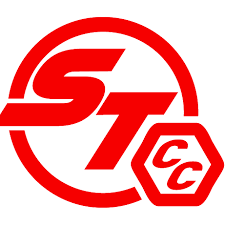They were once the preserve of Formula One and exotic supercars, but carbon-ceramic brakes are now appearing on everything from premium saloons to track-ready coupés. As investors look toward the future of automotive technology, this evolution highlights a broader shift towards lightweight, high-performance components. Here’s what’s fuelling the rise of carbon-ceramic brakes and why their adoption matters beyond the racetrack.
Carbon-ceramic brakes represent a leap forward in braking technology, offering unmatched stopping power, durability, and weight reduction when compared with traditional steel systems. Initially developed for motorsport and supercars, these ultra-advanced components are now becoming increasingly common on high-end road vehicles, signalling strong demand for performance-led engineering.
These brakes are manufactured from a composite material combining carbon fibre with ceramic silicon carbide (SiC), resulting in a lightweight, heat-resistant, and exceptionally robust braking system. Unlike conventional cast-iron rotors, carbon-ceramic discs perform consistently even under extreme heat, making them ideal for track driving and sustained high-speed use.
Their production is a high-precision, labour-intensive process that can take up to a month. It begins with a carbon fibre and silicon resin blend, moulded under 20,000 kg of pressure at 200°C. The resulting shape is heat-treated at 1000°C for two days to establish the carbon structure, followed by a vacuum-infusion of silicon powder at 1700°C to form the ceramic matrix. Finally, the discs are machined and coated for peak performance. This intricate process results in a disc that is both stronger and lighter than its steel counterparts.
The performance benefits are significant. Carbon-ceramic brakes deliver superior braking power through a higher friction coefficient, meaning shorter stopping distances and reliable performance even after repeated heavy use. One of their standout features is their resistance to brake fade—unlike traditional brakes that lose effectiveness under heat stress, carbon-ceramic discs remain consistent, making them indispensable for demanding driving conditions.
Weight savings are another critical advantage. Each disc can be up to 13 lbs lighter than a comparable steel unit, reducing unsprung mass. This translates to quicker acceleration, sharper deceleration, and enhanced steering precision—attributes that improve the entire driving experience.
From a long-term perspective, their extended lifespan makes them a compelling investment. While traditional discs often need replacement around 60,000 miles, carbon-ceramic versions can last four times longer, sometimes even outliving the car. They also resist corrosion entirely, a major benefit for vehicles exposed to wet or salty environments.
Maintenance is also reduced, thanks to their low wear rate and minimal brake dust output. This not only keeps the wheels cleaner but reduces overall brake system wear, contributing further to long-term value. On the visual side, their distinctive appearance adds a performance-focused aesthetic, reinforcing their position as a premium feature.
For performance enthusiasts and long-term car owners, carbon-ceramic brakes are more than just a visual upgrade—they’re a technical advantage that offers tangible returns in safety, performance, and durability. For investors, their growing presence in the broader automotive market reflects increasing consumer appetite for technology previously reserved for elite segments.
Surface Transforms plc (LON:SCE) is a manufacturer of next-generation carbon-ceramic brake discs for automotive and aircraft applications and has been certified to IS9001-2000 since 2008 and was certified to TS16949 automotive quality accreditation and AS9100C aerospace quality accreditation in 2015.

